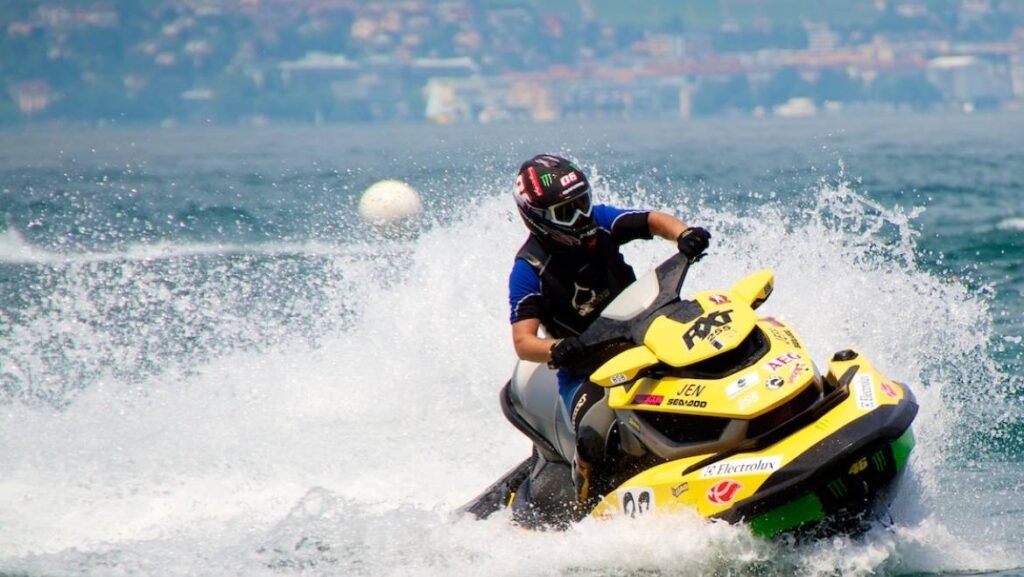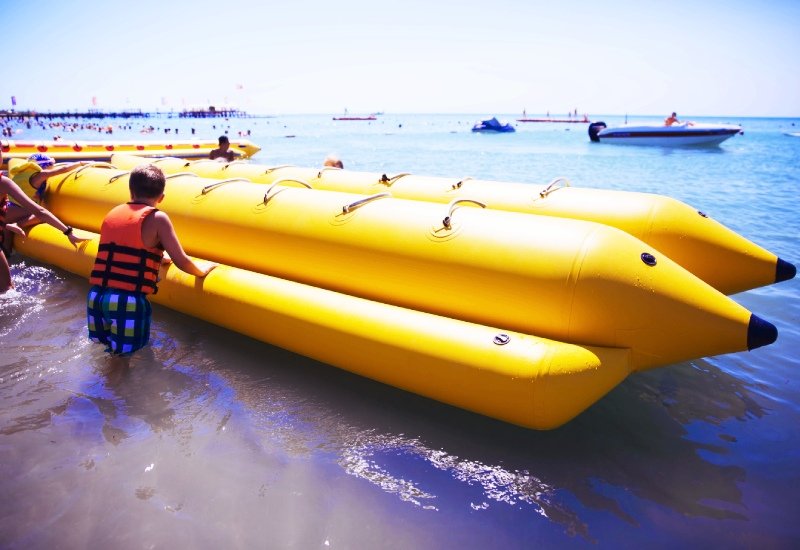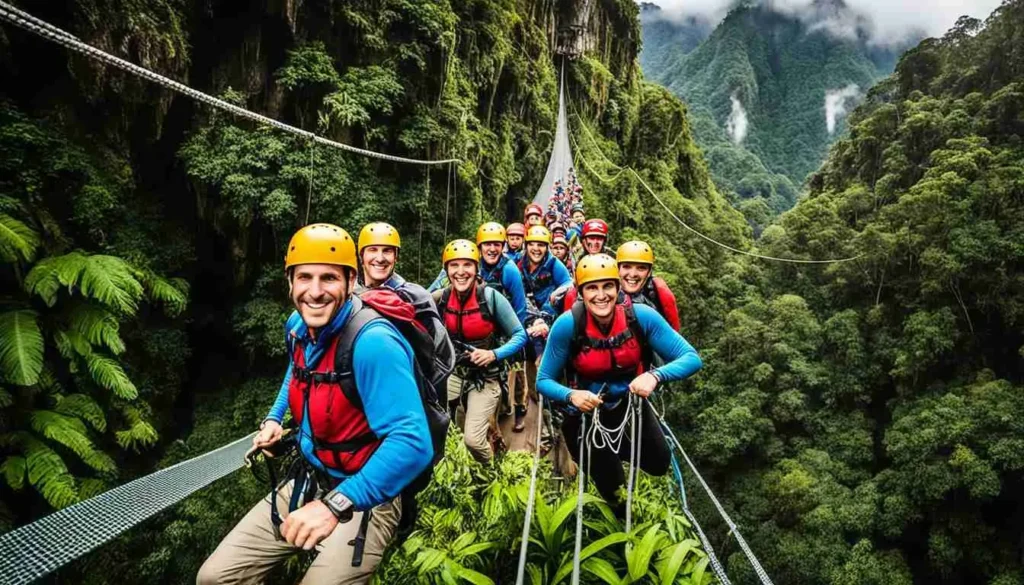Water adventure activities offer an unparalleled opportunity to connect with nature, experience the thrill of exploration, and discover some of the world’s most beautiful and remote locations. Whether it’s kayaking on a peaceful lake, sailing across the open sea, or white-water rafting down a river, each water adventure brings with it unique experiences, health benefits, and a sense of accomplishment.
Exploring seas, lakes, and rivers offers more than just a fun escape—it’s a gateway to personal growth, physical fitness, and environmental awareness. In this article, we’ll explore the many benefits of water adventures, the types of activities you can enjoy, and how you can get started on your own water-based journey.
What Is Water Adventure?

Water adventure refers to a wide range of outdoor activities that take place on or in bodies of water, such as oceans, lakes, rivers, and other water bodies. These activities can be recreational or competitive, and they include both relaxing, scenic experiences and adrenaline-pumping, high-energy sports.
Some common examples of water adventures include:
- Kayaking and canoeing on calm lakes or turbulent rivers
- Sailing and yachting on the open sea
- Scuba diving and snorkeling to explore underwater ecosystems
- White-water rafting down fast-moving rivers
- Wakeboarding and water skiing on lakes and rivers
- Swimming in natural water bodies such as beaches, lakes, or rivers
No matter your choice of water activity, the benefits go far beyond simple enjoyment, extending to physical, mental, and emotional well-being.
The Benefits of Water Adventure
Water adventures offer a multitude of benefits, from improving physical fitness to fostering emotional well-being. Here are some of the key advantages of engaging in water-based activities:
1. Physical Health Benefits
Water-based activities provide excellent cardiovascular exercise, which is essential for maintaining a healthy heart. Here are some specific physical health benefits of water adventures:
Improved Cardiovascular Health
Many water activities, such as swimming, kayaking, and sailing, provide a full-body workout that promotes better heart health. These activities strengthen the heart and improve circulation by engaging the cardiovascular system and increasing endurance.
Increased Muscle Strength and Endurance
Water activities involve a combination of upper and lower body movements, which build muscle strength and endurance. For instance, paddling in a kayak or rowing a canoe requires significant arm, back, and core strength. Swimming is also known for engaging nearly all major muscle groups.
Low-Impact Exercise
For those who suffer from joint pain or injuries, water adventures can be an ideal way to get a full-body workout while minimizing impact. Water buoyancy helps reduce strain on joints and muscles, making it easier to engage in exercise without risking further injury. Swimming is especially beneficial for those with arthritis or lower-back pain.
2. Mental Health Benefits
Engaging in water activities also offers substantial mental health benefits. Being near or on water can have a calming and therapeutic effect, leading to reduced stress and enhanced well-being.
Stress Reduction and Relaxation
Spending time near or on water has been shown to have significant benefits for reducing stress and anxiety. The rhythmic sound of water, the fresh air, and the natural environment all contribute to relaxation and a sense of peace. Studies have found that exposure to water can lower cortisol levels, which are associated with stress.
Improved Focus and Mental Clarity
Water adventures, particularly those that require concentration (such as sailing or kayaking), promote mental clarity and improve focus. When you’re fully engaged in an activity, your mind becomes absorbed in the present moment, helping you disconnect from daily worries and refresh your mental state.
Boosted Mood
Physical activity, particularly outdoors in natural environments, is known to trigger the release of endorphins—chemicals that boost mood and reduce feelings of depression. The sense of accomplishment from completing a challenging water adventure, such as navigating rapids or mastering the basics of scuba diving, can also contribute to a positive, fulfilling experience.
3. Connection with Nature

Water adventures offer a unique opportunity to connect with the natural world in ways that other activities cannot. The beauty of a lake, river, or ocean is often unmatched, providing stunning views, wildlife sightings, and experiences that leave a lasting impression.
Exposure to Scenic Beauty
Whether it’s the shimmering waters of a serene lake, the lush greenery surrounding a river, or the vast expanse of the ocean, water adventures provide unparalleled access to some of the most beautiful natural landscapes on Earth. The sights, sounds, and smells of these environments create an immersive experience that deepens one’s connection to nature.
Wildlife Watching and Exploration
Engaging in activities like kayaking, scuba diving, or even just swimming allows you to encounter wildlife up close. You might see fish, dolphins, seals, or even whales while exploring the ocean. On rivers or lakes, you may encounter birds, otters, and other wildlife, further enhancing your connection to the environment.
Environmental Awareness
Spending time on the water fosters a greater appreciation for environmental conservation. As you witness the beauty of nature firsthand, you’re more likely to recognize the importance of protecting water ecosystems and sustainable practices. Many water-based activities, such as eco-tourism, include components focused on environmental education and advocacy.
4. Social Benefits
Water adventures can also be an excellent way to bond with friends, family, or new acquaintances. Many water sports and activities can be enjoyed in groups, allowing you to share the experience and create lasting memories.
Teamwork and Collaboration
Activities like kayaking, sailing, and white-water rafting require collaboration and teamwork, especially when shared with others. Working together to navigate challenges on the water strengthens relationships and fosters a sense of camaraderie.
Creating Lasting Memories
Water adventures often lead to unforgettable experiences, whether it’s a thrilling river rafting trip, a peaceful day of sailing, or a family snorkeling excursion. The shared joy of discovering new places and overcoming challenges creates memories that last a lifetime.
5. Adventure and Thrill

For those seeking excitement and adrenaline, water adventures provide a thrilling outlet. Whether you’re speeding through rapids on a river or trying your hand at wakeboarding, water sports are a great way to inject excitement into your routine.
Adrenaline-Pumping Activities
Many water-based activities, such as wakeboarding, jet skiing, and parasailing, offer an adrenaline rush that can be exhilarating and invigorating. The challenge of mastering new skills or navigating a difficult course brings an added element of adventure to these activities.
Sense of Accomplishment
Successfully completing a challenging water adventure provides a deep sense of accomplishment. Whether it’s conquering big waves while surfing or navigating a difficult section of river rapids, overcoming obstacles on the water boosts confidence and personal satisfaction.
Popular Water Adventure Activities
Here are some of the most popular water adventure activities that offer a combination of thrill, fitness, and fun:
- Kayaking: Paddle through lakes, rivers, and coastal waters, experiencing the outdoors from a unique perspective.
- Scuba Diving: Explore underwater ecosystems, discover marine life, and gain access to some of the most breathtaking natural environments on Earth.
- Whitewater Rafting: Conquer turbulent river rapids and experience the thrill of navigating challenging water conditions.
- Wakeboarding: Ride a wakeboard behind a boat, performing tricks and riding waves in a dynamic water sport.
- Windsurfing and Kitesurfing: Combine elements of surfing and sailing to ride the wind across water at high speeds.
- Snorkeling: Discover underwater worlds by floating on the surface with a mask and snorkel to observe marine life.
How to Get Started with Water Adventures
Getting started with water adventures is easier than you might think. Here are some tips for beginners:
1. Choose the Right Activity
Decide on the type of water adventure that aligns with your interests and fitness level. If you’re looking for a relaxing experience, kayaking or paddleboarding might be a great choice. For thrill-seekers, activities like whitewater rafting or wakeboarding could provide the excitement you’re craving.
2. Get the Right Gear
Make sure to invest in the necessary gear for your chosen water activity. This may include life jackets, helmets, wetsuits, paddles, or snorkeling equipment. Many outdoor retailers and rental companies offer gear for all types of water sports.
3. Take a Lesson
If you’re new to the activity, consider taking a lesson or joining a group. Many organizations offer beginner classes for activities like surfing, sailing, or scuba diving, ensuring that you learn the proper techniques and safety protocols.
4. Stay Safe
Always prioritize safety when engaging in water activities. Understand the risks involved, wear the appropriate safety gear, and follow local guidelines and regulations. If you’re unsure about water conditions or safety, ask for advice from experienced adventurers or instructors.
Also Read : Sustainable Water Sports: Eco-friendly Ways To Enjoy The Ocean
Conclusion
Water adventures offer a fantastic way to explore nature, stay active, and bond with friends or family. From the physical benefits of improved fitness and strength to the mental health advantages of reduced stress and increased relaxation, water activities provide a holistic experience that goes beyond just fun. Whether you prefer tranquil moments on a kayak or the thrill of whitewater rafting, these adventures promote personal growth, environmental appreciation, and unforgettable memories.
By embracing water adventure activities, you can reconnect with nature, improve your health, and create lasting memories while enjoying the many benefits that come with exploring the seas, lakes, and rivers.
FAQs
What are the most popular water adventure activities?
Some of the most popular water adventure activities include kayaking, scuba diving, whitewater rafting, wakeboarding, surfing, windsurfing, and snorkeling. These activities offer a range of thrills, from relaxing experiences to high-energy challenges.
Do I need special skills to start water adventures?
While many water adventures require a basic level of physical fitness, most can be enjoyed by beginners. It’s helpful to take lessons or practice with a guide to ensure safety and improve your skills, especially for more challenging activities like surfing or scuba diving.
What should I wear for a water adventure?
The gear you wear depends on the activity and conditions. Commonly, you’ll need a life jacket, wetsuit, or other protective gear, such as a helmet. Many companies that offer water sports activities will also provide the necessary equipment.
Is it safe to engage in water adventures?
Water adventures are safe when proper precautions are taken. Always follow safety guidelines, wear the appropriate gear, and take lessons if you’re a beginner. Make sure to assess weather conditions and understand the risks before heading out on the water.
What are the health benefits of water adventures?
Water adventures provide excellent cardiovascular exercise, muscle strengthening, and mental relaxation. They improve endurance, promote stress relief, and offer a low-impact workout that is gentle on the joints, making them accessible for a wide range of fitness levels.
